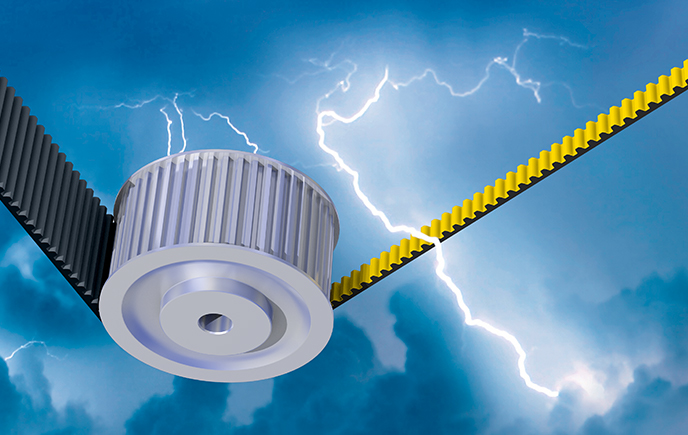Full steam ahead - Scottish distillery with Grundfos
There’s steam and there’s high-quality steam. There are pump solutions and intelligent pump solution...
Calculating potential cost savings from replacing an existing drive system can be a bit hit and miss. Should you believe what the sales engineer tells you? Should you trust your experience and instincts? Or should you use the “Conti Professional” energy cost calculator?

The web-based calculator is a key feature of the two-pulley and multi-pulley Continental design program. By calculating the annual energy and cost savings, the application gives you clear, unbiased evidence of how much you can save with a new Continental system. And it’s usually a sizeable amount.
But just as the Conti Professional app means you don’t have to sort the sales hyperbole from the facts, so there’s no need to read a list of its benefits here. Instead, simply see how it works in the example below.
Scenario:
A power plant operator wants to increase the energy-efficiency of their fin fans – for environmental reasons and to reduce costs. The new drives also need to be as quiet as possible to avoid disturbance of a nearby residential area.
Using Conti Professional, the engineer begins by creating his project and launching the project editor. Under “Type of System”, he specifies that endless belts are to be used. Then, under “Belt Selection”, he chooses a timing belt as the “belt nature” and Conti SilentSync (since this runs especially quietly) as “belt type”. He also specifies a pitch of 14M.
The next step is to specify the geometry data. The drive has two pulleys. The drive shaft pulley has 28 teeth and the output shaft pulley: 264. The speed of the drive shaft is 1,470rpm.
Finally for this stage, the engineer selects a standard belt length of 3,920mm. Based on this data, the system calculates a centre or axis distance of 754.84 mm. This is followed by details of the power output (37kW), and the operating conditions – which call for a service factor of 1.4.
According to Continental’s Application Engineer Marcel Vogel, who played a key role in developing the software, “These few details are enough to enable the new timing belt drive to be calculated. Also, the user now has all the information needed to request the required parts and estimate the capital costs.”
Once the new timing belt drive has been designed, the engineer can input the machine and belt data for the old drive into the Conti Professional calculator.
In this example, a fin fan in the power plant operates for 16 hours a day, or 5,840 hours annually. It is serviced every 3,200 operating hours, when the initial tension is correctly set.
To date, it has been operated by a raw-edge narrow-section V-belt with a basic efficiency of 95%. However, over time, average efficiency has fallen to around 84%. “The figures stored in Conti Professional are based on figures from Continental’s own experience,” explains Vogel. “If a customer has figures calculated in-house, these can be inputted instead and the energy efficiency will be calculated using that data.”
In contrast, the new timing belt system uses Conti SilentSync, which is maintenance-free in operation and has an efficiency of 99%. Irrespective of the system, the energy costs are 0.15 euros per kWh.
Based on this data, the Conti Professional energy cost calculator calculates the annual energy consumption of the current system is 256,261.86 kWh. This compares to energy consumption of the new system of 218,262.63 kWh. Applying the energy price above, the annual saving with the new system would be 5,699.88 euros.
As Vogel points out, “When you consider that cooling towers in power plants have 20 or more fin fans, this quickly results in a six-figure sum saved.”
The resulting report clearly summarizes all the project data, and can easily be converted into a PDF file for sharing with colleagues. It can also be saved in Conti Professional, ready – for example – for modification for future projects.
“The user can also contact us with any questions relating to capital costs and technical details,” says Vogel – adding a human touch to the calculator’s efficiency and effectiveness.
Get the latest updates from ERIKS including:
Choose any or all of these via the ERIKS Subscription Centre!
Our Know+How brings together the best of the latest Know+How Hub articles in one easy to digest magazine, covering the following topics:
That's why its the leading magazine for maintenance engineers from ERIKS.
Want Know+How Magazine delivered direct to your door? Visit the ERIKS Subscription Centre to opt-in!
Take a look at our latest updates...
There’s steam and there’s high-quality steam. There are pump solutions and intelligent pump solution...
Looking for a custom Product quote? Need an answer to a Technical question? Looking for Careers/HR support? Want to work with us? Interested in our Digital Trading solutions? Have a finance question? Send us your enquiry and a member of the ERIKS team will be with you quickly.
We strive to deliver exceptional quality service and products. As part of this goal, we encourage customers to submit feedback on their experiences so we can resolve any issues and concerns.
At ERIKS we strive to deliver the best quality service and products. As part of this goal we encourage customers to submit feedback on their experiences so we can resolve any issues and concerns.
Call us: +441215086000
